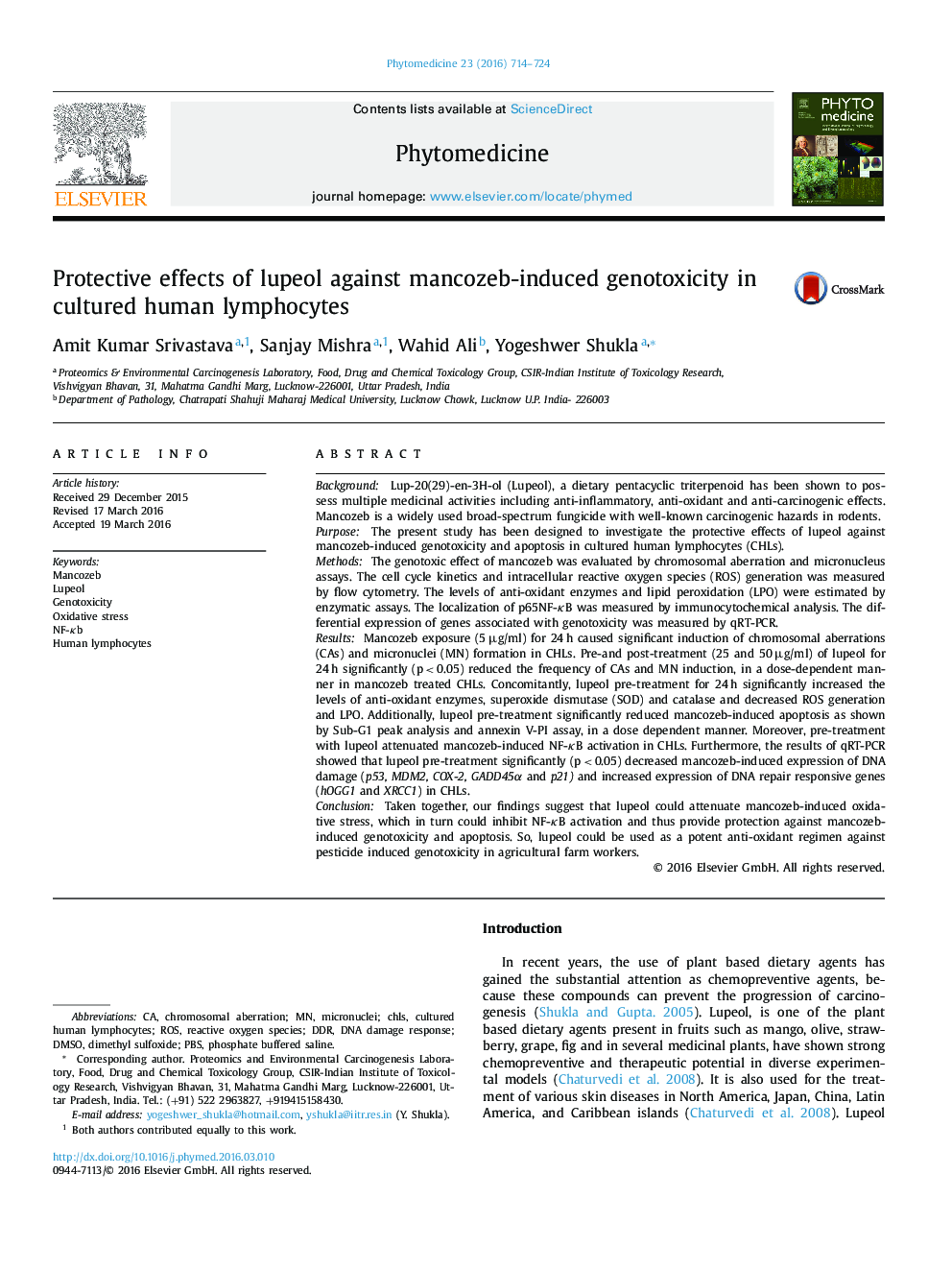| Article ID | Journal | Published Year | Pages | File Type |
|---|---|---|---|---|
| 2496308 | Phytomedicine | 2016 | 11 Pages |
BackgroundLup-20(29)-en-3H-ol (Lupeol), a dietary pentacyclic triterpenoid has been shown to possess multiple medicinal activities including anti-inflammatory, anti-oxidant and anti-carcinogenic effects. Mancozeb is a widely used broad-spectrum fungicide with well-known carcinogenic hazards in rodents.PurposeThe present study has been designed to investigate the protective effects of lupeol against mancozeb-induced genotoxicity and apoptosis in cultured human lymphocytes (CHLs).MethodsThe genotoxic effect of mancozeb was evaluated by chromosomal aberration and micronucleus assays. The cell cycle kinetics and intracellular reactive oxygen species (ROS) generation was measured by flow cytometry. The levels of anti-oxidant enzymes and lipid peroxidation (LPO) were estimated by enzymatic assays. The localization of p65NF-κB was measured by immunocytochemical analysis. The differential expression of genes associated with genotoxicity was measured by qRT-PCR.ResultsMancozeb exposure (5 µg/ml) for 24 h caused significant induction of chromosomal aberrations (CAs) and micronuclei (MN) formation in CHLs. Pre-and post-treatment (25 and 50 µg/ml) of lupeol for 24 h significantly (p < 0.05) reduced the frequency of CAs and MN induction, in a dose-dependent manner in mancozeb treated CHLs. Concomitantly, lupeol pre-treatment for 24 h significantly increased the levels of anti-oxidant enzymes, superoxide dismutase (SOD) and catalase and decreased ROS generation and LPO. Additionally, lupeol pre-treatment significantly reduced mancozeb-induced apoptosis as shown by Sub-G1 peak analysis and annexin V-PI assay, in a dose dependent manner. Moreover, pre-treatment with lupeol attenuated mancozeb-induced NF-κB activation in CHLs. Furthermore, the results of qRT-PCR showed that lupeol pre-treatment significantly (p < 0.05) decreased mancozeb-induced expression of DNA damage (p53, MDM2, COX-2, GADD45α and p21) and increased expression of DNA repair responsive genes (hOGG1 and XRCC1) in CHLs.ConclusionTaken together, our findings suggest that lupeol could attenuate mancozeb-induced oxidative stress, which in turn could inhibit NF-κB activation and thus provide protection against mancozeb-induced genotoxicity and apoptosis. So, lupeol could be used as a potent anti-oxidant regimen against pesticide induced genotoxicity in agricultural farm workers.
Graphical abstractFigure optionsDownload full-size imageDownload high-quality image (92 K)Download as PowerPoint slide
